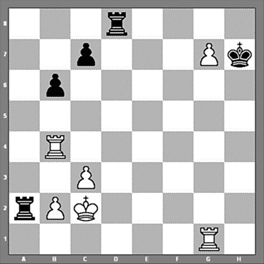
| NEWS |
| |
| FEATURES |
| ENTERTAINMENT |
| COLUMNS |
| CONTACT US |
| HOW TO SUBMIT |
| BACK ISSUES |
By Chad Lieberman
Every once in a while, the chess community uncovers some interesting chess history. In the October issue of ChessLife, writers John Hilbert and IM Donaldson recall the life of Phillip R. Woliston.
Raised in Seattle, Woliston started playing chess when he entered Seattle's Franklin High School. During the summers, he played sixteen hours a day with a friend of his, Olaf Ulvestad.
In just four months, he moved from the bottom of the ladder at his chess club to second place. He even had a blindfold playing alter ego who was sixth on the ladder!
During the mid 1930s, Woliston and his mother moved to the Los Angeles area. While there, he played in a quadrangular tournament against Reuben Fine, Herman Steiner, and Harry Bochorow. The game featured in the column this week comes from that tournament.
Although chess would become just a hobby to Woliston later in his life, he remained on top of his game, even defeating a former World Junior Champion in 1972.
I chose to include this game in this week's article because of the interesting pawn ending that arises. Whenever I attempt to study king and pawn endgames, I try to set up random positions and work them out. I will admit, however, that this sometimes fails miserably. One side will win in a simple matter.
I can assure you that this is not the case with this endgame study. I challenge the reader to set up the position after 37.Kf3 and attempt to find the best moves for both sides. Please remember, this requires a lot of patience because endgame lines have many branches and variations. See if you can find if the result was what should have happened. If you are interested in reading more about Phillip Woliston, I refer you to the recent article in ChessLife.

Woliston, P. - Steiner, H. | |
| 1.e4 | c5 |
| 2.Nf3 | Nf6 |
| 3.e5 | Nd5 |
| 4.d4 | cxd4 |
| 5.Qxd4 | e6 |
| 6.Bc4 | Nc6 |
| 7.Qe4 | Nde7 |
| 8.Nc3 | Nf5 |
| 9.Bf4 | Bb4 |
| 10.0-0 | Bxc3 |
| 11.bxc3 | d5 |
| 12.exd6 | Nxd6 |
| 13.Qe2 | Nxc4 |
| 14.Qxc4 | 0-0 |
| 15.Rad1 | Qa5 |
| 16.Rfe1 | Rd8 |
| 17.Ne5 | Nxe5 |
| 18.Bxe5 | Rxd1 |
| 19.Rxd1 | Bd7 |
| 20.Bxg7 | Qa4 |
| 21.Qc7 | Qxc2 |
| 22.Qxd7 | Kxg7 |
| 23.Qd4+ | Kg8 |
| 24.h4 | e5 |
| 25.Qg4+ | Qg6 |
| 26.Qf3 | e4 |
| 27.Qf4 | Re8 |
| 28.Rd5 | Qe6 |
| 29.Rg5+ | Kh8 |
| 30.h5 | e3 |
| 31.fxe3 | Qxe3+ |
| 32.Qxe3 | Rxe3 |
| 33.Rc5 | Kg7 |
| 34.Kf2 | Re6 |
| 35.a4 | Rc6 |
| 36.Rxc6 | bxc6 |
| 37.Kf3 | Kh6 |
| 38.Kg4 | a5 |
| 39.c4 | c5 |
| 40.Kh4 | f6 |
| 41.Kg4 | Kg7 |
| 42.Kf5 | Kf7 |
| 43.g3 | Kg7 |
| 44.Ke6 | Kh6 |
| 45.Kd5 | Kxh5 |
| 46.Kxc5 | f5 |
| 47.Kb6 | Black resigns |